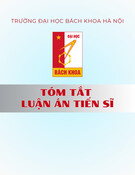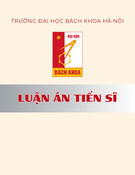
Annals of Mathematics
On the periods of motives
with complex multiplication
and a conjecture of Gross-
Deligne
By Vincent Maillot and Damian Roessler

Annals of Mathematics,160 (2004), 727–754
On the periods of motives
with complex multiplication
and a conjecture of Gross-Deligne
By Vincent Maillot and Damian Roessler
Abstract
We prove that the existence of an automorphism of finite order on a
Q-variety Ximplies the existence of algebraic linear relations between the
logarithm of certain periods of Xand the logarithm of special values of the
Γ-function. This implies that a slight variation of results by Anderson, Colmez
and Gross on the periods of CM abelian varieties is valid for a larger class of
CM motives. In particular, we prove a weak form of the period conjecture
of Gross-Deligne [11, p. 205]1. Our proof relies on the arithmetic fixed-point
formula (equivariant arithmetic Riemann-Roch theorem) proved by K. K¨ohler
and the second author in [13] and the vanishing of the equivariant analytic
torsion for the de Rham complex.
1. Introduction
In the following article, we shall be concerned with the computation of
periods in a very general setting. Recall that a period of an algebraic variety
defined by polynomial equations with algebraic coefficients is the integral of
an algebraic differential against a rational homology cycle. In his article [16,
formule 26, p. 303] Lerch proved (see also [3]) that the abelian integrals that
arise as periods of elliptic curves with complex multiplication (i.e. whose ra-
tional endomorphism ring is an imaginary quadratic field) can be related to
special values of the Γ-function. A special case of his result is the following
identity (already known to Legendre [15, 1-`ere partie, no. 146, 147, p. 209])
π/2
0
dt
1−k2sin2(t)=22
331
4
8πΓ3(1
3),
where k= sin( π
12 ), which is associated to an elliptic curve whose rational en-
domorphism ring is isomorphic to Q(√−3). The formula of Lerch (now known
1This should not be confused with the conjecture by Deligne relating periods and values
of L-functions.

728 VINCENT MAILLOT AND DAMIAN ROESSLER
as the Chowla-Selberg formula) has been generalised to higher dimensional
abelian varieties in the work of several people (precise references are given be-
low), including Anderson and Colmez. They show that the abelian integrals
arising as periods of abelian varieties of dimension dwith complex multipli-
cation byaaCMfield (i.e. a totally complex number field endowed with an
involution which becomes complex conjugation in any complex embedding)
whose Galois group over Qis abelian of order 2d, are related to special values
of the Γ-function.
Consider now any algebraic variety Xdefined over the algebraic numbers.
The transcendence properties of the periods of Xare influenced by the al-
gebraic subvarieties of X; a subvariety of Xhas a cycle class in the dual of
a rational homology space of Xand the duals of these cycle classes span a
subspace of homology, which might be large. Up to normalisation, the integral
of an algebraic differential against a cycle class will be an algebraic number.
The celebrated Hodge conjecture describes the space spanned by the classes
of the algebraic cycles in terms of the decomposition of complex cohomology
in bidegrees (the Hodge decomposition) and its underlying rational structure.
This set of data is called a Hodge structure. The Hodge conjecture implies
that the periods of Xdepend only on the Hodge structure of its complex co-
homology and thus any algebraic variety whose cohomology contains a Hodge
structure related to a Hodge structure appearing in the cohomology of an
abelian variety with complex multiplication as above should have periods that
are related to the special values of the Γ-function. This leads to the conjecture
of Gross-Deligne, which is described precisely in the last section of this paper.
The main contribution of this paper is the proof of a (slight variant of) the
conjecture of Gross-Deligne, in the situation where the Hodge structure with
complex multiplication arises has the direct sum of the nontrivial eigenspaces
of an automorphism of finite prime order acting on the algebraic variety. We
use techniques of higher-dimensional Arakelov theory to do so. Arakelov the-
ory is an extension of Grothendieck style algebraic geometry, where the al-
gebraic properties of polynomial equations with algebraic coefficients and the
differential-geometric properties of their complex solutions are systematically
studied in a common framework.
Many theorems of Grothendieck algebraic geometry have been extended to
Arakelov theory, in particular there is an intersection theory, a Riemann-Roch
theorem ([9]) and a fixed-point formula of Lefschetz type ([13]). Our proof of
the particular case of the Gross-Deligne conjecture described above relies on
this last theorem; we write out the fixed-point formula for the de Rham complex
and obtain a first formula (11) which involves differential-geometric invariants
(in particular, the equivariant Ray-Singer analytic torsion); these invariants are
shown to vanish and we are left with an identity (12) which involves only the
topological and algebraic structure. More work implies that this is a rewording

ON THE PERIODS OF MOTIVES WITH COMPLEX MULTIPLICATION 729
of a part of the conjecture of Gross-Deligne. Our proof is thus an instance of a
collapse of structure, where fine differential-geometric quantities are ultimately
shown to depend on less structure than they appear to.
In the rest of this introduction, we shall give a precise description of our
results and conjectures.
So let Mbe a (homological Grothendieck) motive defined over Q0, where
Q0is an algebraic extension of Qembedded in C. We shall use the properties
of the category of motives over a field which are listed at the beginning of
[5]. The complex singular cohomology H(M,C) of the manifold of complex
points of Mis then endowed with two natural Q0-structures. The first one
is induced by the standard Betti Q-structure H(M,Q) via the identifications
H(M,Q
0)=H(M,Q)⊗QQ0and H(M,C)=H(M,Q
0)⊗Q0Cand will be
referred to as the Betti (or singular) Q0-structure on H(M,C). The second one
arises from the comparison isomorphism between H(M,C) and the de Rham
cohomology of M(tensored with Cover Q0) and will be referred to as the
de Rham Q0-structure.
Let Qbe a finite (algebraic) extension of Qand suppose that the image
of any embedding of Qinto Clies inside Q0. Furthermore, suppose that M
is endowed with a Q-motive structure (over Q0). A Q-motive is also called a
motive with coefficients in Q(see [5, Par. 2]). The Q-motive structure of M
induces a direct sum decomposition
H(M,C)=
σ∈Hom(Q,C)
H(M,C)σ
which respects both Q0-structures. The notation H(M,C)σrefers to the com-
plex vector subspace of H(M,C) where Qacts via σ∈Hom(Q, C). The de-
terminant detC(H(M,C)σ)thushastwoQ0-structures. Let vsing (resp. vdR)
be a nonvanishing element of detC(H(M,C)σ) defined over Q0for the singu-
lar (resp. for the de Rham) Q0-structure. We write Pσ(M) for the (uniquely
defined and independent of the choices made) image in C×/Q×
0of the complex
number λsuch that vdR =λ·vsing.
Let χbe an odd simple Artin character of Qand suppose at this point that
Mis homogeneous of degree k(in particular, its cohomological realisations are
homogeneous of degree k). Consider the following conjecture:
Conjecture A(M,χ). The equality of complex numbers
σ∈Hom(Q,C)
log |Pσ(M)|χ(σ)
=L′(χ, 0)
L(χ, 0)
σ∈Hom(Q,C)
p+q=k
p·rk(Hp,q(M,C)σ)χ(σ)
is verified,up to addition of a term of the form σ∈Hom(Q,C)log |ασ|χ(σ),
where ασ∈Q×
0.

730 VINCENT MAILLOT AND DAMIAN ROESSLER
Recall that an Artin character of Qis a character of a finite dimensional
complex representation of the automorphism group of the normalisation
Qof
Qover Q, which is trivial on all the automorphisms of
Qwhose restriction to
Qis the identity. The normalisation
Qmay be embedded in Q0and in order
for the equality of Conjecture A to make sense, one has to choose such an
embedding; it is a part of the conjecture that the equality holds whatever the
choice.
Conjecture A is a slight strengthening of the case n=1,Y=SpecQ0of
the statement in [17, Conj. 3.1]. Notice that this conjecture has both a “mo-
tivic” and an “arithmetic” content. More precisely, if the Hodge conjecture
holds and Q0=Q, this conjecture can be reduced to the case where Mis a
submotive of an abelian variety with complex multiplication by Q. Indeed, as-
suming the Hodge conjecture, one can show by examining its associated Hodge
structures that some exterior power of M(taken over Q) is isomorphic to a mo-
tive over Qlying in the tannakian category generated by abelian varieties with
maximal complex multiplication by Q. In this latter case, the Conjecture A
is contained in a conjecture of Colmez [4]. Performing this reduction to CM
abelian varieties or circumventing it is the “motivic” aspect of the conjecture.
However, even in the case of CM abelian varieties, the conjecture seems
far from proof: as far as the authors know, only the case of Dirichlet characters
has been tackled up to now; obtaining a proof of Conjecture A for nonabelian
Artin characters (i.e. for abelian varieties with complex multiplication by a field
whose Galois group over Qis nonabelian) is the “arithmetic” aspect alluded
to above.
In this text we shall be concerned with both aspects, but our original
contribution concerns the “motivic” aspect, more precisely, in finding a way to
circumvent the Hodge conjecture.
We now state a weaker form of Conjecture A. Let χbe a simple odd Artin
character of Qas before, and Nbe a subring of Q. Let M0be a motive over
Q0(not necessarily homogeneous) and suppose that M0is endowed with a
Q-motive structure (over Q0). Let Mk
0(k0) be the motive corresponding
to the kth cohomology group of M0.
Conjecture B(M0,N,χ). The equality of complex numbers
k
0
(−1)k
σ∈Hom(Q,C)
log |Pσ(Mk
0)|χ(σ)
=
k
0
(−1)kL′(χ, 0)
L(χ, 0)
σ∈Hom(Q,C)
p+q=k
p·rk(Hp,q(M,C)σ)χ(σ)
is verified,up to addition of a term of the form
σ∈Hom(Q,C)
i
(bi,σ log |αi,σ|)χ(σ),
where αi,σ ∈Q×
0,bi,σ ∈Nand iruns over a finite set of indices.


























